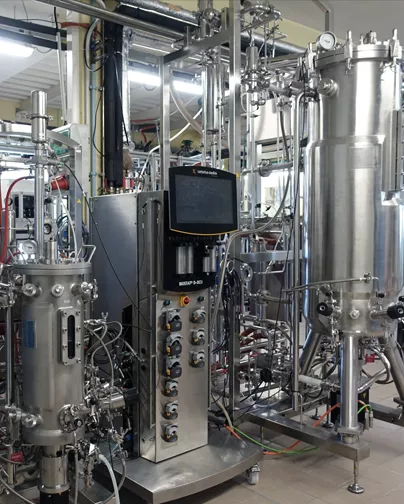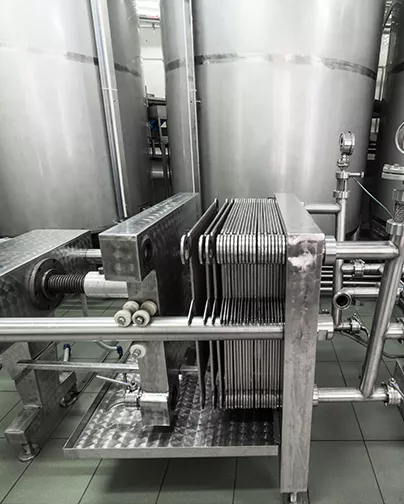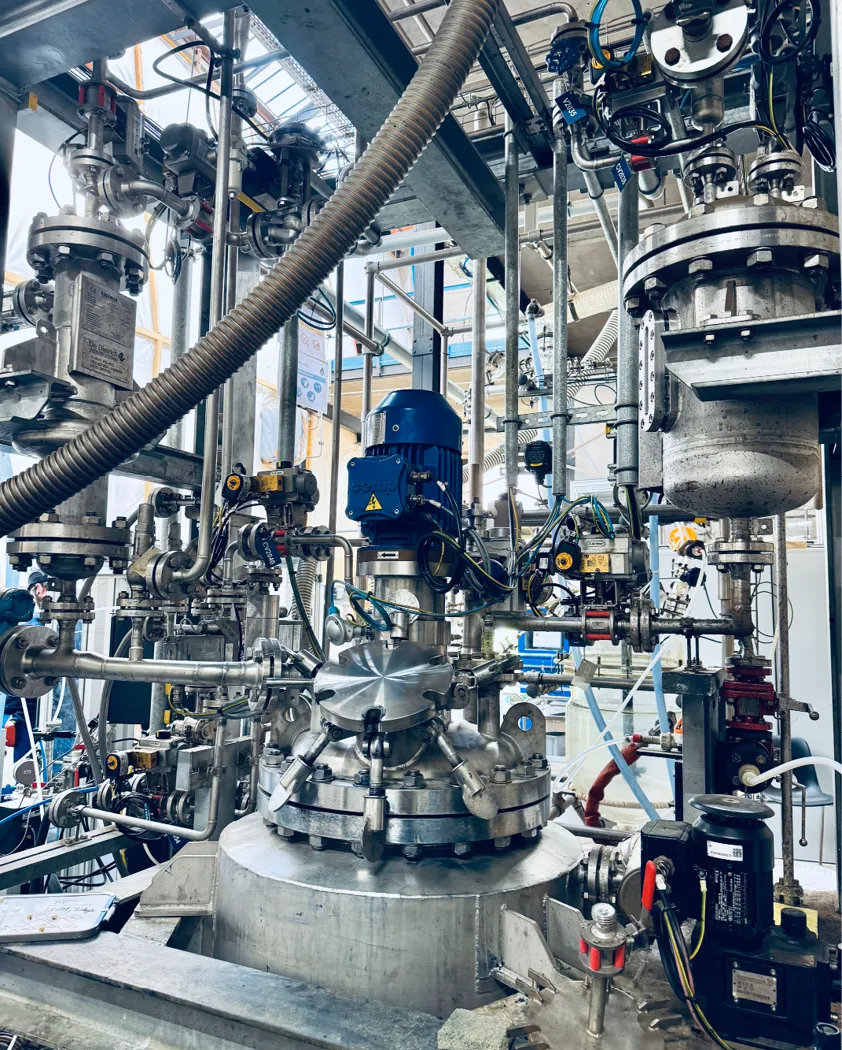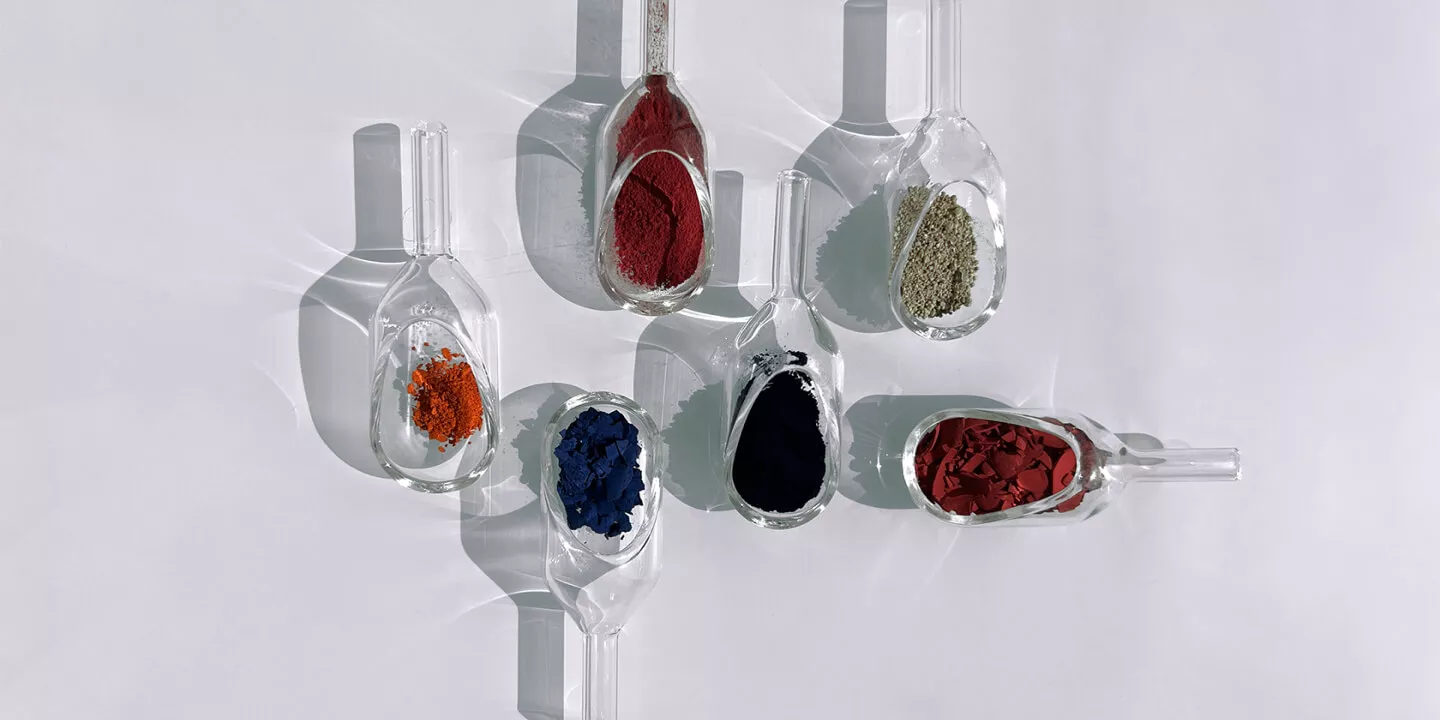
Eco-Indigo
Pili offers a low-carbon direct replacement for petro-based indigo without compromising on performance and scalability.
- Denim
- Dyes
- Inks
- Paints & Coatings
- Pigments
- Textile
We are developing a low-carbon alternative to petrochemical colorants. Our hybrid process has already made it possible to market the first biobased molecules essential to many industries wishing to break free from fossil resources, as well as to co-develop custom solutions.

Pili offers a low-carbon direct replacement for petro-based indigo without compromising on performance and scalability.

Pili offers the first biobased aromatic platform molecule on an industrial scale. The revolution triggered by Pili is a major step towards decarbonizing the chemical industry and reducing our dependence on fossil fuels.

Pili continues to develop mono- and polyaromatic molecules to become the leader in large-scale production of biobased aromatic compounds.
To come

High-performance, low-carbon, biobased pigments. The only biobased HPP solution
Custom development
Pili develops customized aromatic molecules for customers who are ready to co-develop a biobased solution and have identified a market of interest.
We can develop tailor-made products alongside committed customers who want to accelerate the transformation of their activities. Our platform technology extends far beyond color applications.
Pili can provide solutions to the sustainable chemistry sector through hybrid processes combining biology and chemistry. Our multidisciplinary teams are the architects of this revolution, which is urgently called for in many industries.
Pili's Process
At Pili, we don't set biology against chemistry. Our innovative hybrid processes combine the best of industrial fermentation and chemical synthesis.

Serjik Ahkhundov

Marie-Sarah Adenis

Nordroden

Marie-Sarah Adenis

Marie-Sarah Adenis

We use renewable, traceable raw materials (molasses, starch-based sugar) derived from agricultural resources to manufacture our products without drawing on fossil resources.

We then use this biomass to feed and cultivate selected micro-organisms to produce our biobased aromatic intermediate during fermentation. These fermentation processes offer a high degree of reproducibility and are widely used in industry, particularly in the pharmaceutical and food sectors, to meet a wide range of needs.

Once fermentation is complete, we proceed to filtration, to separate and extract our aromatic intermediate from the fermentation medium. This step ensures a high-purity product that meets chemical industry standards.

At this stage, we have obtained a biobased aromatic intermediate, a building block which can be converted into a number of high-value chemicals or material for numerous applications (colorants, fragrances, flavors, pharmaceutical and cosmetic ingredients). A revolution to decarbonize the chemical industry!

At this point, we switch to organic chemistry. It is from this biobased building block that we create different compounds, applying the principles of green chemistry (low temperature, water as solvent, catalytic method to avoid waste...).
Life Cycle Analysis
Pili is committed to conducting and sharing the results of Life Cycle Analyses (LCA) for all its products.
LCA is an essential tool based on an international standard (ISO norm) for objectively quantifying and comparing the environmental impact of products.
Pili relies on this standard to demonstrate its impact reduction and continuously improve its processes.
LCA results are based on databases fed by academic knowledge, which also depend on the transparency of industrial players.
Comparison
As environmental challenges continue to increase, it is becoming crucial to rethink industrial processes, particularly in the production of colorants and pigments. On one hand, the traditional petrochemical process relies on fossil resources, resulting in significant ecological impacts. On the other, alternatives like the one proposed by Pili, based on sustainable processes, are emerging to meet these challenges. This comparison highlights the shift towards more ecological practices, and the importance of choosing technologies that prioritize sustainability.
This source of carbon is derived from the decomposition of organic matter (plant and animal) over several million years (this source of carbon is therefore non-renewable, as it takes a long time to regenerate).
All technologies using oil and gas to manufacture synthetic compounds. Although petrochemicals are highly efficient, they are unfortunately based on energy-intensive and polluting processes that release large quantities of CO₂ into the atmosphere.
Aromatic molecule derived from fossil resources, generally CMR (carcinogenic, mutagenic and reprotoxic), widely available on the market.
Colorant chemistry dates back to the 19th century, when petrochemicals took off. Colors are mass-produced, but with a heavy impact on ecosystems.
This source of carbon also comes from plants, through CO₂ captured in the atmosphere by plants during photosynthesis over a period of several months (this source of carbon is therefore renewable, as it is constantly regenerated over a short period of time).
A virtuous process that uses renewable raw materials and processing methods that emit less CO₂, consume less energy and are less polluting.
Biobased, non-CMR aromatic molecule, produced for the first time on an industrial scale by Pili.
Pili relies on the twelve principles of green chemistry to select innovative technologies and processes (catalytic methods, reactions carried out at lower temperatures to save energy, use of water as a solvent, etc.).
